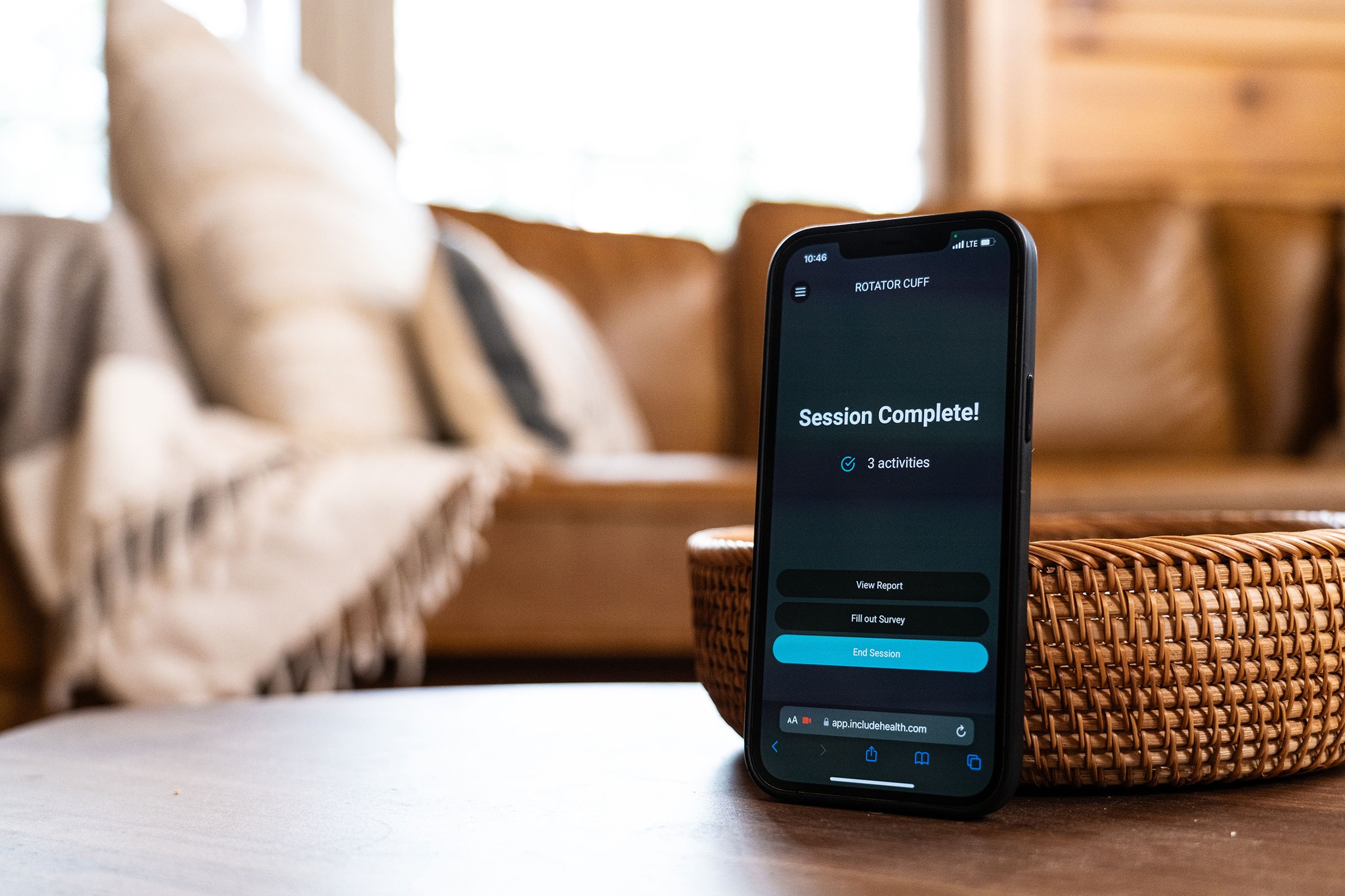
Plan Builder Redesign
Year
Q2 2023
Client
IncludeHealth
Industry
Healthcare
Role
Product Designer
IncludeHealth is a remote physical therapy platform that utilizes computer vision to track and measure patient performance. A patient's home exercise plan is built within IncludeHealth by licensed physical therapists, then sent to their account where they are expected to perform it.
The portion of IncludeHealth where physical therapists build patient's plans is referred to as the "Plan Builder." During Q2 of 2023 the IncludeHealth team decided to make improvements to the Plan Builder, being the portion of the platform that physical therapists spent the most time and an area where we saw the greatest room for improvement. The goal of the refresh was to address user feedback, reduce friction, and streamline time spent in-app during the plan creation process.
Role & Responsibilities
The existing Plan Builder predated my time at IncludeHealth and was one of the last remaining original features in the clinician portion of IncludeHealth. With newly established design principals and design system, along with a wealth of user-feedback, I was tasked with leading the project in both a Squad Lead (Shape Up process lead) and Lead Product Designer capacity.
Wireframe Creation
Prototyping
User Testing
Feedback Analysis & Dissemination
UI Design
Quality Assurance
Workflow
The existing workflow required users to create a client(patient) profile before initiating a plan, contrary to prevailing HEP (Home Exercise Program) workflows. This was due to the fact that we require plans to be attributed to singular patients for billing, however we were able to delay the creation of a client until plan save in order to match the in-clinic flow of our therapists.
VS
Screen Real Estate
The Plan Builder and "Activity Drawer" showcased a limited number of activities, making it challenging for PTs to find, modify or browse activities effectively, especially on smaller laptop screens.
Verbiage
The "protocols" feature, which referred to pre-selected activity collections for quick plan generation, was not intuitive language for physical therapists. This coupled with the fact that protocols were not accessible through the plan builder led to low usage of this feature.
Goals
In order to ensure that our redesign was successful, we went about setting three goals for the new Plan Builder.
01
Reduce friction and time spent generating plans.
02
Improve understanding and usability of features by enhancing the "protocol" feature and rebranding it as "Templates."
The Approach
Stakeholder Collaboration
Following the Shape Up Process, as the designated Squad Leader, collaboration with leadership from Product, Business, and Engineering was crucial to understand diverse needs and requirements. This paved the way for comprehensive requirements gathering and team alignment.
Research & Discovery
A mix of competitive audits, customer interviews, and close collaboration with the clinical team provided a rich understanding of user needs.
Design & Development
The process started with creating workflows, then low-fidelity wireframes which were used to gather stakeholder feedback. After their feedback HIFI mockups were created and turned into an interactive prototype in Figma. Usability tests on Zoom further refined the design, leading to changes in workflow and UI adjustments. Close collaboration with the Engineering team ensured that the design was both innovative and technically feasible.
Results
In the end, it was evident that our endeavors had borne fruit. The updated tool was not only a testament to meticulous design and collaboration but also a resounding success in the eyes of its users. The feedback we received was overwhelmingly positive, signaling that we had effectively addressed the concerns and needs of our user base. Furthermore, a significant uptick in the use of templates underscored the tangible impact of our efforts, showcasing that our design improvements directly translated to enhanced user engagement and efficiency.
The "Plan Builder Refresh" for IncludeHealth wasn't just a design project; it was a journey of understanding user needs, navigating technical challenges, and fostering collaboration. The positive reception of the revamped Plan Builder stands testament to the team's relentless efforts.
Lessons Learned

Designed & Built by Brady Jacobsen
©2023











